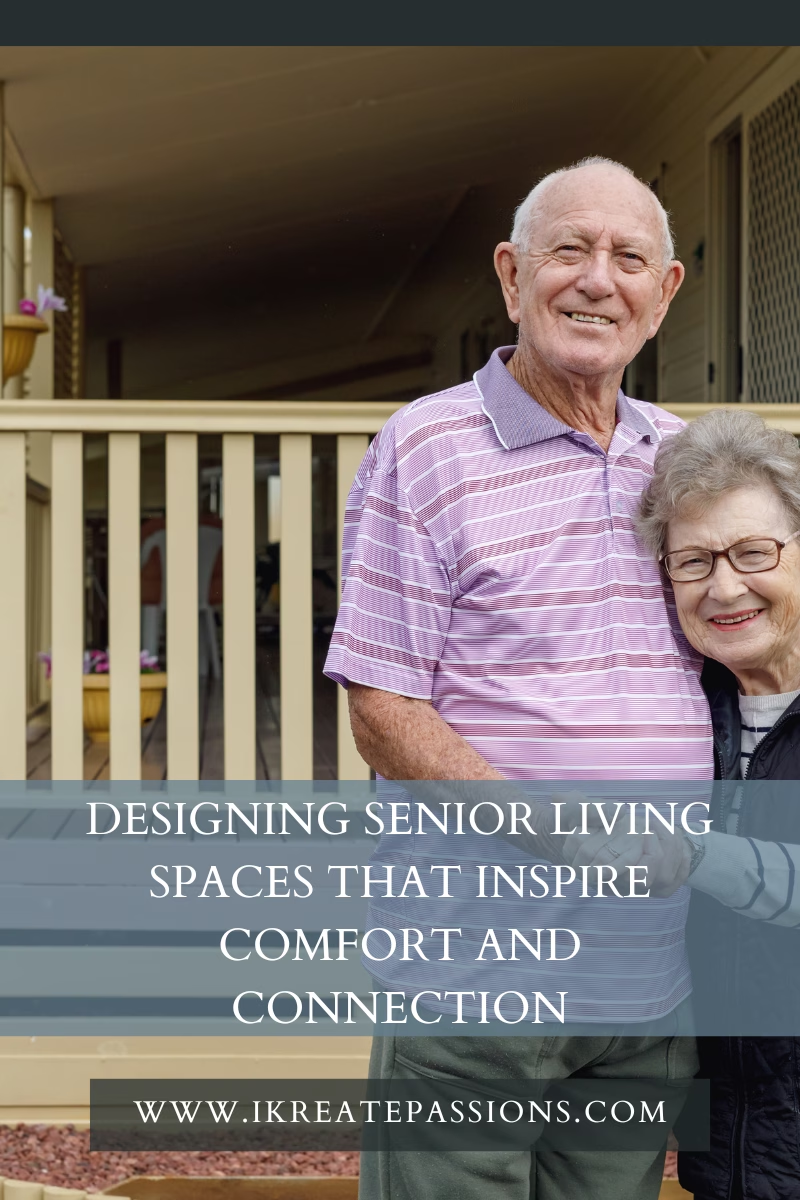Key Takeaways
- Modern senior living communities foster connection, autonomy, and meaningful daily experiences for residents.
- Design elements like natural light, flexible spaces, and robust safety measures have been proven to boost the well-being of older adults.
- Integrating nature, art, and personalization helps senior living environments feel welcoming and engaging.
- Sustainable materials and emerging technologies are redefining quality of life and home-like comfort for seniors.
- Future trends will highlight digital health, energy efficiency, and person-centered solutions for evolving needs.
The New Focus in Senior Living Design
Today’s senior living landscape is undergoing a significant transformation, leaving behind old models and focusing on holistic well-being, meaningful engagement, and a sense of purpose. No longer are these spaces simply about providing a safe roof and basic care—they’re being crafted to offer a rich tapestry of social interaction, comfort, and joy. Many leading communities are integrating specialized support, such as memory care Central Valley, CA, which blends personalized attention with inviting, home-like environments. Unlike one-size-fits-all layouts of the past, contemporary design considers residents’ diverse backgrounds, preferences, and interests, infusing each environment with warmth and opportunities for connection.

The movement toward resident-focused senior living means every detail matters, from the architecture to the gathering spaces. This shift recognizes the inherent value in creating a community atmosphere that supports individuality, autonomy, and friendship. Residents desire places not only to live, but to thrive—spaces where each day feels meaningful and each person feels a genuine sense of belonging. As a result, the best modern communities start with design choices that put people first and continually adapt to meet changing needs.
Natural Light: Shining a Light on Well-Being
Natural daylight isn’t just a design flourish—it’s backed by years of scientific research as essential for healthy aging. Large, well-placed windows, skylights, and sun-soaked common areas become a vital source of vitamin D. They can help regulate circadian rhythms, contributing to better sleep quality and balanced moods. The therapeutic benefits of ample sunlight are especially critical for seniors, as even short periods of daily exposure have been linked to lower rates of depression and improved memory retention.
According to the future of senior living design, design professionals increasingly use architectural features like clerestory windows and glass walls to introduce sunlight into previously overlooked areas, such as hallways or activity rooms. Even subtle adjustments, like pale reflective surfaces and well-chosen window treatments, can distribute natural light more widely, making spaces feel brighter, larger, and uplifting throughout the day.
Creating Community Through Design
More than ever, the social fabric of senior living relies on thoughtfully integrated communal spaces. Dining areas, multipurpose lounges, outdoor courtyards, and group kitchens are no longer utilitarian—they are welcoming and intentionally versatile. Flexible layouts and comfortable furnishings allow spaces to transition effortlessly from mealtime gatherings to book clubs, card games, or movie nights.

These inviting environments promote everyday connections, combating social isolation, a critical health risk for older adults. When encouraged by design to cross paths and share experience, residents are more likely to form close friendships and support networks. Simple touches, like a cozy window seat or a fireplace lounge, help spark spontaneous conversation, while designated hobby studios ensure everyone can pursue their passions. Over time, these spaces foster activity, companionship, purpose, and a strong sense of community.
Prioritizing Accessibility and Safety
A great design balances charm with functionality, ensuring every resident, regardless of mobility or health challenges, can move about confidently and easily. Wide, clutter-free corridors, step-free entrances, and grab bars provide physical support and peace of mind. Choices such as lever door handles, smooth flooring, and color-contrasted edges help those with limited vision or dexterity to navigate environments safely.
Enhanced by technology, safety now integrates seamlessly into daily life. Motion-activated lighting reduces trip hazards at night, while discreet emergency call buttons can summon help without drawing unwanted attention. For residents living with memory loss, clear wayfinding cues—such as distinct color palettes for each wing and personalized door markers—minimize confusion and reinforce independence. The overarching goal is always to enable autonomy, dignity, and reassurance for everyone in the community.
Bringing Nature Indoors
Biophilic design goes beyond potted plants—today’s senior living environments may showcase lush atriums, green walls, soothing indoor fountains, and even dedicated gardening spaces. Bringing the outdoors inside offers tangible physical and emotional benefits, from reduced blood pressure and improved mood to increased participation in community life. For residents unable to venture outdoors frequently, these features provide a refreshing sensory experience and a connection to the natural world.
Expansive windows overlooking gardens, bird-friendly patios, and even the opportunity to grow herbs or flowers are being prioritized in many new builds and renovations. Authentic, natural materials—such as wood or stone textures—can be included in flooring and wall treatments to foster tranquility and comfort. Access to fresh air is essential too, so balconies, screened porches, and open-air terraces are key touchpoints throughout these communities, ensuring a restorative environment regardless of mobility.
The Role of Art and Personalization
Recent shifts in care recognize that personal expression boosts motivation and well-being for seniors—making art, music, and creative outlets central to contemporary living spaces. Corridors often display resident-made artwork or family photos, while shared craft rooms provide the tools and safe spaces for continued creative exploration. Participation in painting, pottery, or even digital art can help maintain cognitive skills and foster friendships.
Opportunities for personalization aren’t limited to communal spaces. Residents are frequently encouraged to decorate their own apartments or rooms with favorite furnishings, mementos, or family heirlooms. As design targeted to inspire in senior living communities shows, these custom touches transform living quarters with meaning and familiarity—grounding them emotionally and offering immense comfort. Large community art installations or photo collage walls can also reflect the collective personality of the residents, reinforcing a shared sense of identity and pride.
Adaptable Spaces for Changing Needs
Flexible design ensures residents can fully participate in their activities over time. Multipurpose rooms, such as fitness studios, event halls, or yoga spaces, can serve various roles. Folding partitions, mobile furniture, and adaptable lighting systems can change the space’s function, allowing for group wellness activities, private family visits, and technology-based learning sessions. Technology, such as portable sound systems and interactive whiteboards, enhances group engagement and private entertainment.
Looking Ahead: Technology and Sustainability in Senior Living
Technology advancements enhance seniors’ independence and safety, with voice-controlled assistants, wearable health monitors, and telehealth platforms facilitating routine management. These systems also connect families and staff, detecting falls and routine changes. Sustainability is a priority, with LED lighting, solar panels, recycled materials, and organic landscaping promoting a healthier lifestyle. New designs often feature rain gardens, green spaces, and smart energy management, promoting a more responsible lifestyle.
Final Thoughts on Building Spaces that Feel Like Home
The most successful senior living communities blend comfort, safety, and opportunity—empowering each resident to live with dignity and fulfillment. By prioritizing natural light, community spaces, thoughtful safety, and sustainable technology, these environments are far more than a place to age. Their settings are where daily life is enriched through warmth, creativity, and togetherness. When each detail—from a resident’s favorite chair to the soft glow of afternoon sun in a quiet lounge—is designed with intention, senior living feels truly like home.

I agree that having abundant natural light and bring nature indoors are great design concepts for seniors. Research shows that these two elements positively impact their health!
Yes, there are so many small things that have an impact on the well-being of seniors.
This is a cause that is close to my heart. Natural light is such a great idea I’d love to see implemented in more senior homes.
Yes, being close to nature helps them heal and what better than sunlight.
Excellent concept because it thinks about health besides comfort. Their health and happiness are the top priority.
True that, their wellbeing is everything.